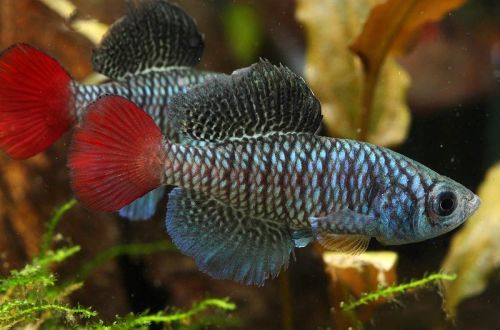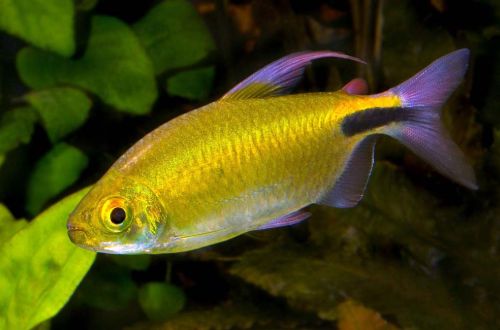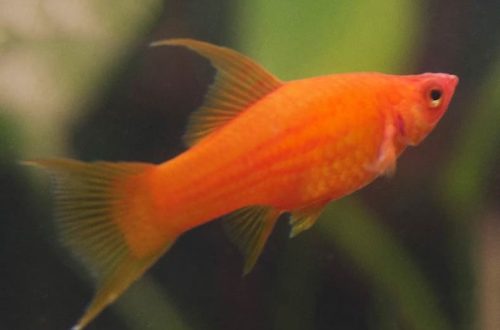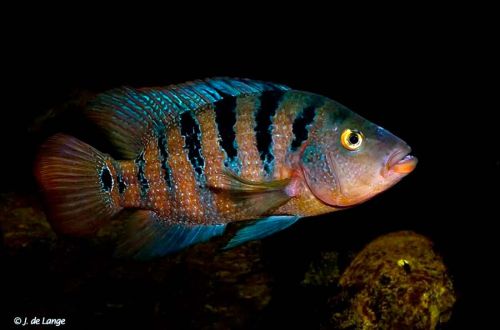
Notobranchius Patrizi
Notobranchius Patrici, scientific name Nothobranchius patrizii, belongs to the family Nothobranchiidae (Notobranchius or African Rivulins). Bright temperamental fish, which primarily refers to males. The content is simple, but breeding is fraught with great difficulties. Not recommended for beginner aquarists.

Contents
Habitat
Native to the African continent. The natural habitat extends into Ethiopia, Somalia and Kenya. Inhabits shallow streams and rivers, swamps, temporary reservoirs that appear during the rainy season. A typical biotope is a small backwater densely overgrown with aquatic vegetation, only a few centimeters deep.
Brief information:
- The volume of the aquarium – from 40 liters.
- Temperature – 20-28°C
- Value pH — 6.0–7.5
- Water hardness – soft to medium hard (4-15 dGH)
- Substrate type – dark soft
- Lighting – subdued
- Brackish water – no
- Water movement – little or no
- The size of the fish is about 5 cm.
- Nutrition – any food rich in protein
- Compatibility – in a group with one male and several females
Description
Adults reach a length of about 5 cm. Males in color resemble the related species Notobranchius Palmquist, but differ in the predominance of blue flowers on the body and fins. The tail is red. The scales have a black border, creating a mesh pattern. Females are more modestly colored without bright colors.
Food
The basis of the diet should be live or frozen food, such as brine shrimp, bloodworm, daphnia, etc. Dry food can be used as an additional food source.
Maintenance and care, arrangement of the aquarium
For a group of 3-5 fish, an aquarium of 30-40 liters is enough. In the design, it is necessary to provide places for shelters. A good choice would be thickets of living plants, natural driftwood. The lighting is subdued. In bright light, the color of the fish will become faded. Floating plants will provide additional shading, and they will also prevent fish from jumping out. The substrate is soft dark. If breeding is planned, then it is advisable to purchase special spawning substrates for Killy fish, which can be easily removed from the aquarium.
Notobranchius patrici perfectly adapts to a wide range of temperatures and hydrochemical values. In general, it is more hardy than most other freshwater fish that live in nature in a more stable environment. However, regular maintenance of the aquarium should not be neglected and organic waste should not be allowed to accumulate.
Behavior and Compatibility
Males are territorial and do not tolerate rivals in their territory. In small tanks, skirmishes will happen all the time. In a limited space, it is desirable to maintain a group size of one male and several females. The latter are peaceful and conflict-free. Compatible with other species of comparable size, with the exception of relatives from the genus Notobranchius.
Breeding / breeding
In their natural habitat, breeding occurs as the dry season approaches. The fish lay their eggs in the soil layer. When the reservoir dries up, the fertilized eggs end up in a semi-dry substrate, where they will stay for several months until the first rains begin.
In a home aquarium, you will need to recreate similar conditions. In the artificial environment, the seasonality of reproduction is not expressed. Spawning can take place at any time. When eggs appear on the substrate, the soil layer is removed from the aquarium and placed in a dark place (at a temperature of 26–28 ° C). After 2.5 months, the eggs are poured with cool water (about 18 ° C). The fry will appear within a few hours.
Fish diseases
Hardy and unpretentious fish. Diseases manifest themselves only with a significant deterioration in the conditions of detention. In a balanced ecosystem, health problems usually do not occur. For more information on symptoms and treatments, see the Aquarium Fish Diseases section.





